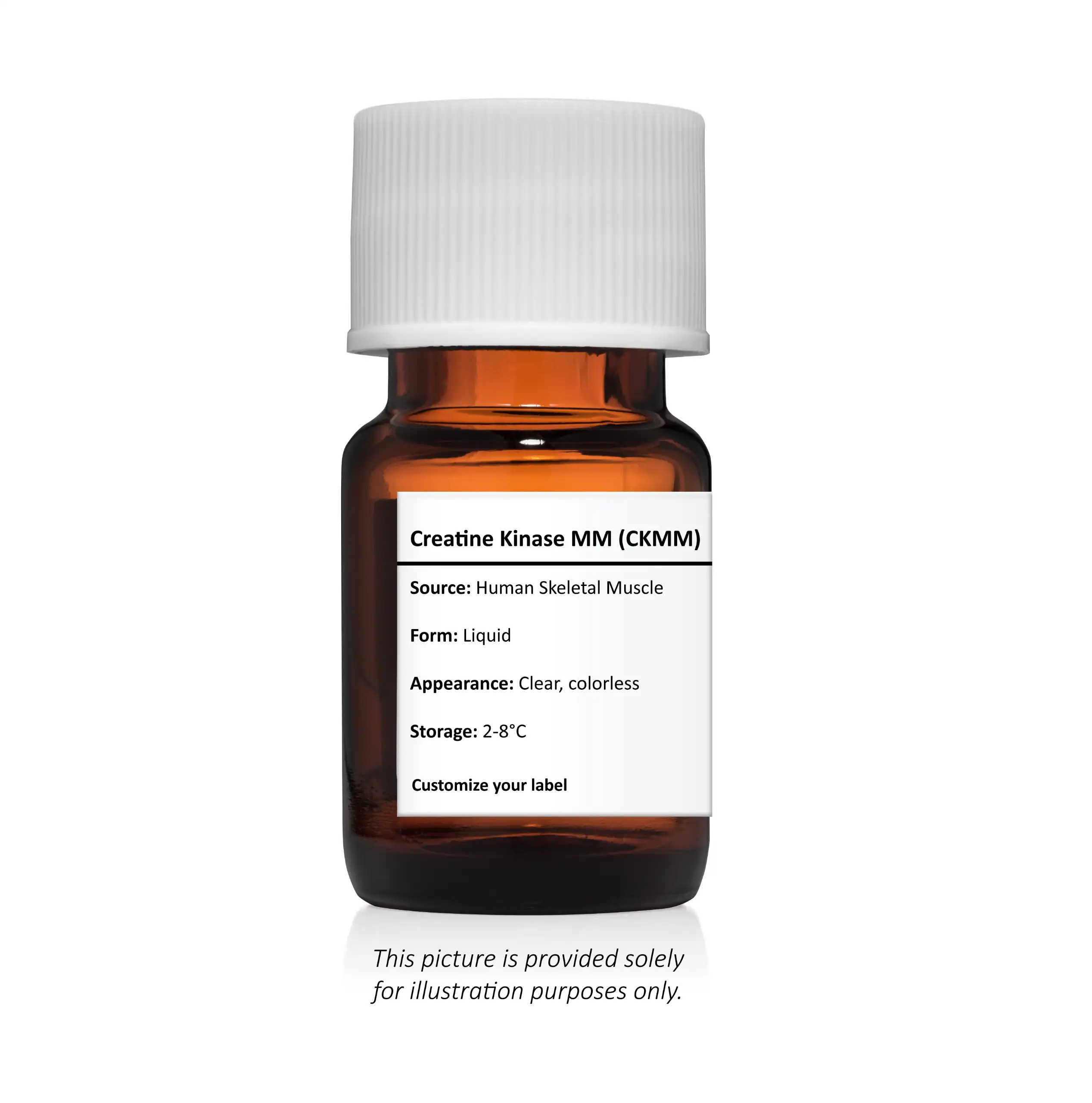Creatine Kinase MM (CKMM)
Creatine Kinase MM (CKMM) is composed of two homodimers that make CK a dimeric enzyme.
| Product Specifications | |
|---|---|
| Source | Human Skeletal Muscle |
| Form | Liquid |
| Buffer | TRIS buffer with 0.1% Sodium Azide at pH 7.0 |
| Concentration | ≥ 5,000 IU/mL for Immunopure |
| Assay | Assay performed on Roche Cobas c501 |
| Storage | 2-8°C |
| Molecular Weight | 81,000 - 84,000 kDa |
| Appearance | Clear, Colorless |
| Associated Products | Creatine Kinase BB (CKBB): Partially Purified, Purified, and Immunopure Creatine Kinase MB (CKMB): Purified and Immunopure Myoglobin: Purified and Immunopure |

CKMM is measured in total CK and is found in serum, cardiac muscle, and primarily in skeletal muscle. It has an important role of diagnosing, monitoring, and assessing the carrier status of muscular dystrophy as well as diagnosing other muscle diseases such as polymyositis and dermatomyositis. Skeletal muscle is expressed as approximately 98% CKMM and 1% CKMB. In contrast, the myocardium heart muscle is expressed as 70% CKMM and 30% CKMB. Muscle damage can temporarily increase CK levels. An increase in CK levels can be observed following strenuous activity or long exercise sessions. The more muscle mass a person may have, the higher the CK levels are in that person. For this reason, men usually have higher levels than women.
